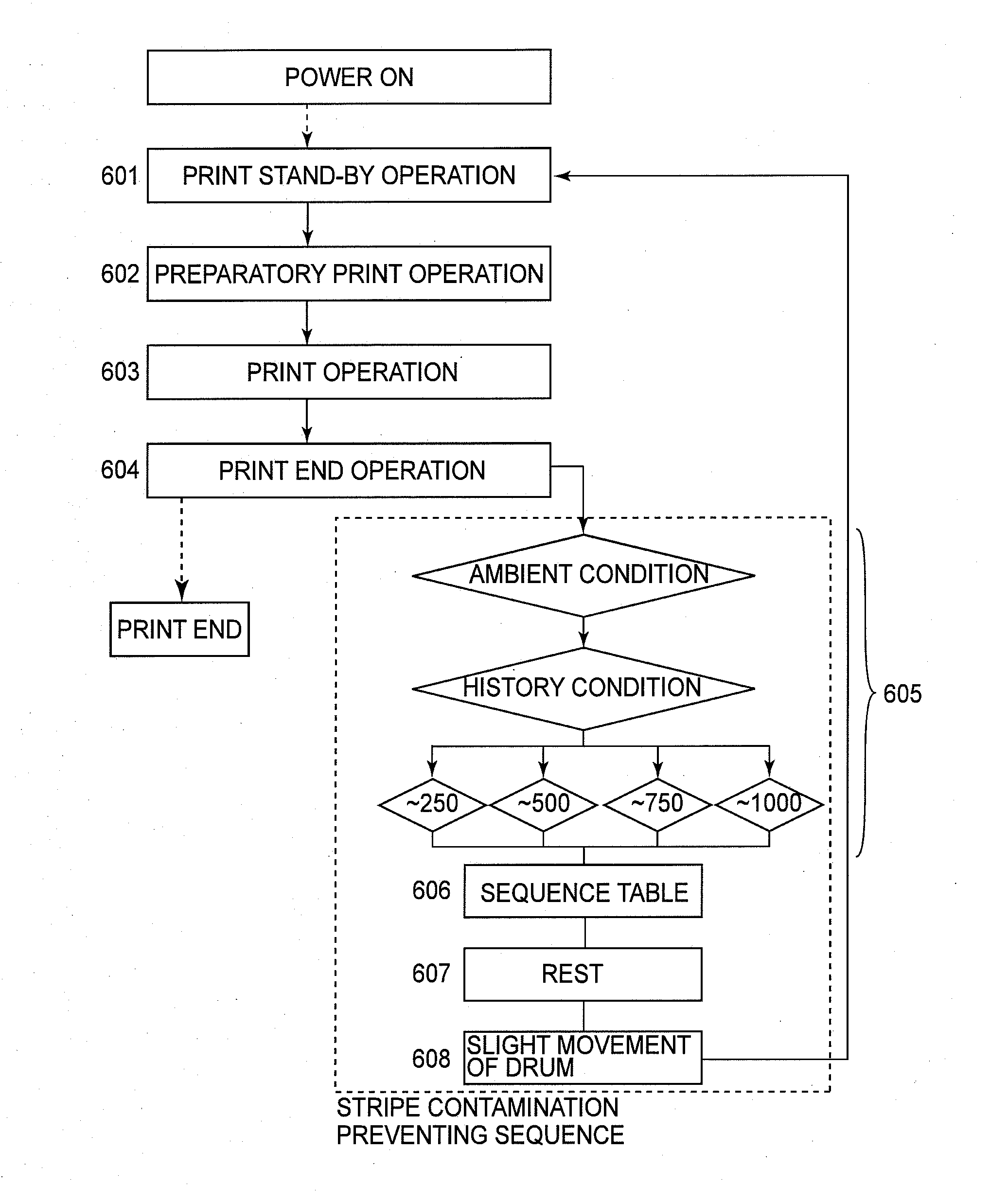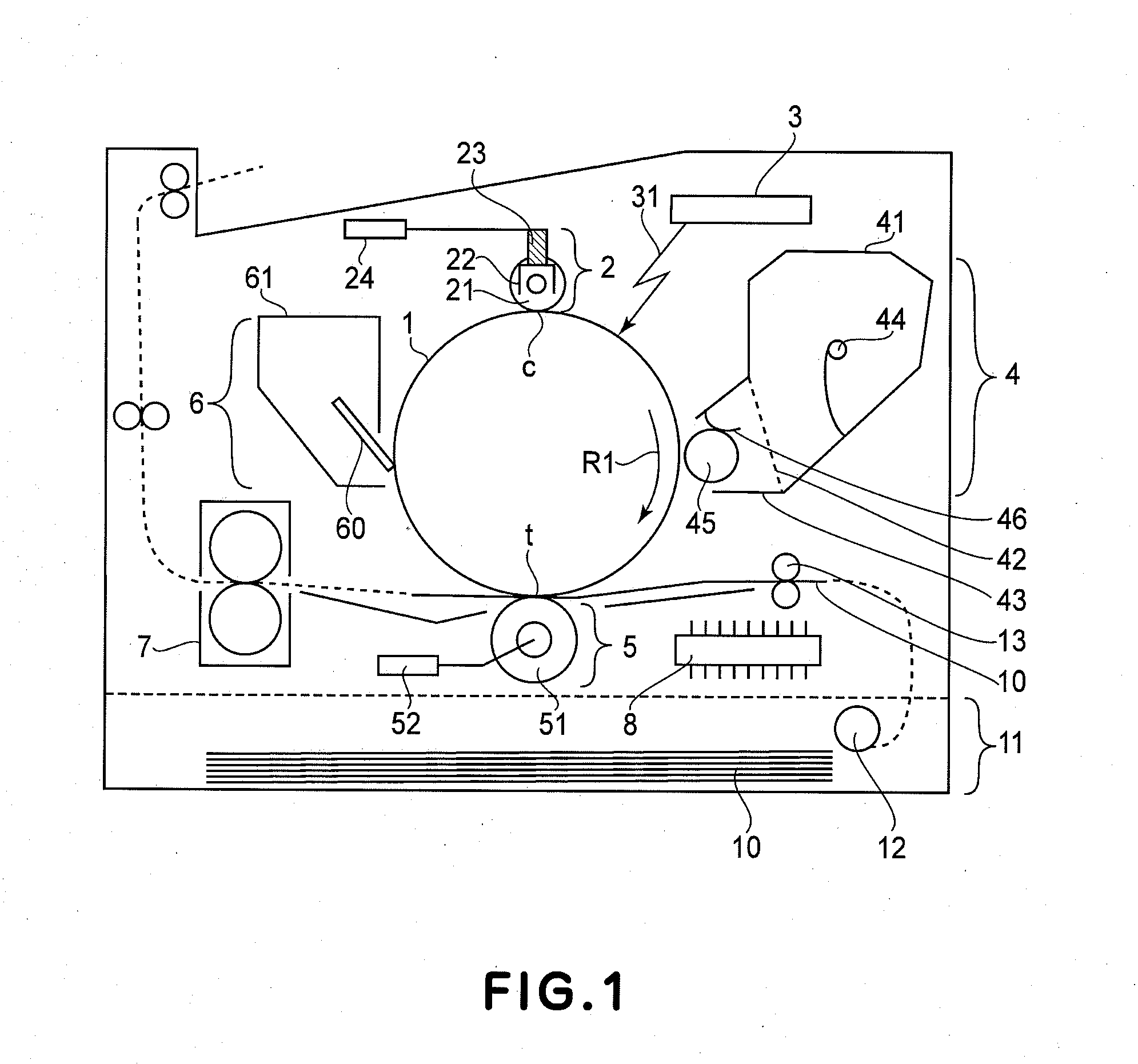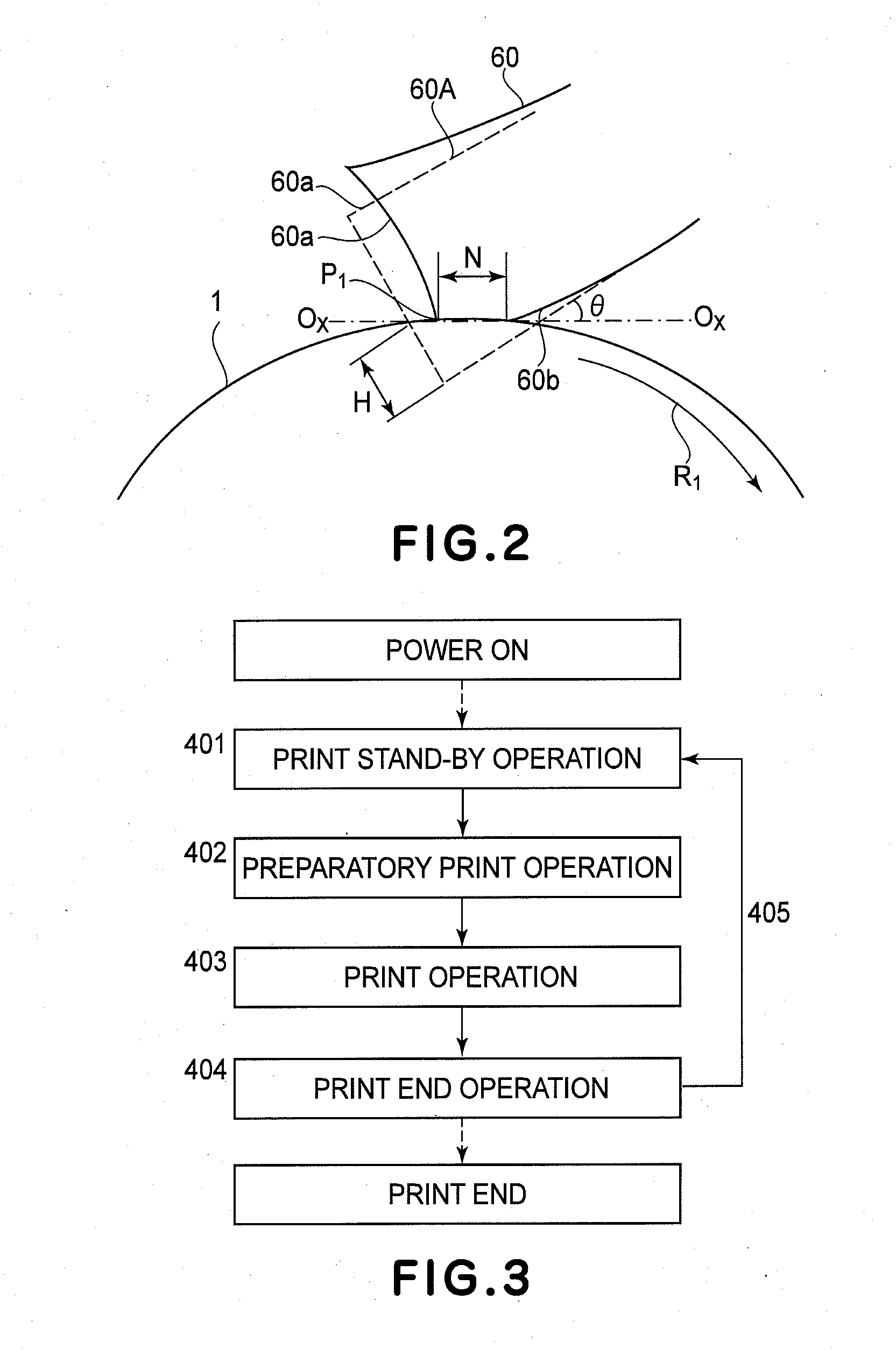Image forming apparatus
- Summary
- Abstract
- Description
- Claims
- Application Information
AI Technical Summary
Benefits of technology
Problems solved by technology
Method used
Image
Examples
embodiment 1
[0025]Embodiment 1 of the present invention will be described. In this embodiment, an “image forming area” refers to an area of a photosensitive drum in which an image (latent image or toner image) to be subjected to image formation on a recording material (recording medium) as a toner image receiving member is to be formed. Further, “during image formation” refers to a period of time when respective process means for charging, exposure, development, transfer, and the like act on the photosensitive drum in the image forming area. Strictly speaking, during image formation with respect to the charging and during image formation with respect to the transfer refer to different periods of time. Further, “during non-image formation” refers to a period of time except the “during image formation”.
[0026]FIG. 1 is a schematic illustration of the image forming apparatus in this embodiment. In this embodiment, at a central portion of the image forming apparatus, a drum-like electrophotographic ...
embodiment 2
[0095]In Embodiment 1, it was possible to decrease a degree of the occurrence of the image defect resulting from the drive stripe substance by rotating the photosensitive drum during the print stand-by period. However, as a result of an experiment, the drive stripe contamination is liable to occur in a high-temperature and high-humidity environment rather than a low-temperature and low-humidity environment. This may be attributable to a phenomenon such that the drive stripe substance is increased in viscosity and adhesive property in the high-temperature and high-humidity environment and is liable to accumulate on the cleaning blade nip downstream side. As described above, such a result that the accumulation amount of the drive stripe substance is small depending on the disposition environment is also obtained. Further, as a condition in which the drive stripe substance is liable to accumulate on the cleaning blade nip downstream side, in addition to the case where the printing on a...
embodiment 3
[0115]In Embodiment 1, by rotating the photosensitive drum during the print stand-by period, it was possible to decrease the degree of the occurrence of the image defect caused due to the drive stripe contamination. However, in the sequence described in Embodiment 1, the degree of the occurrence of the drive stripe contamination can be decreased but the drive stripe contamination slightly occurs in some cases.
[0116]FIG. 10 shows relaxation of the strain after the printing on 1000 sheets is effected in the case where the sequence is executed. At the stand-by time of 45 minutes, the strain amount is once increased. This is attributable to the execution of the sequence. The relaxation of the cleaning blade strain is continued also during a period from the completion of the execution of the sequence to provision of a subsequent print instruction. As shown in FIG. 11(c), with respect to the drive stripe substance T5 separated and dropped from the cleaning blade when the drive stripe cont...
PUM
 Login to View More
Login to View More Abstract
Description
Claims
Application Information
 Login to View More
Login to View More - R&D
- Intellectual Property
- Life Sciences
- Materials
- Tech Scout
- Unparalleled Data Quality
- Higher Quality Content
- 60% Fewer Hallucinations
Browse by: Latest US Patents, China's latest patents, Technical Efficacy Thesaurus, Application Domain, Technology Topic, Popular Technical Reports.
© 2025 PatSnap. All rights reserved.Legal|Privacy policy|Modern Slavery Act Transparency Statement|Sitemap|About US| Contact US: help@patsnap.com



